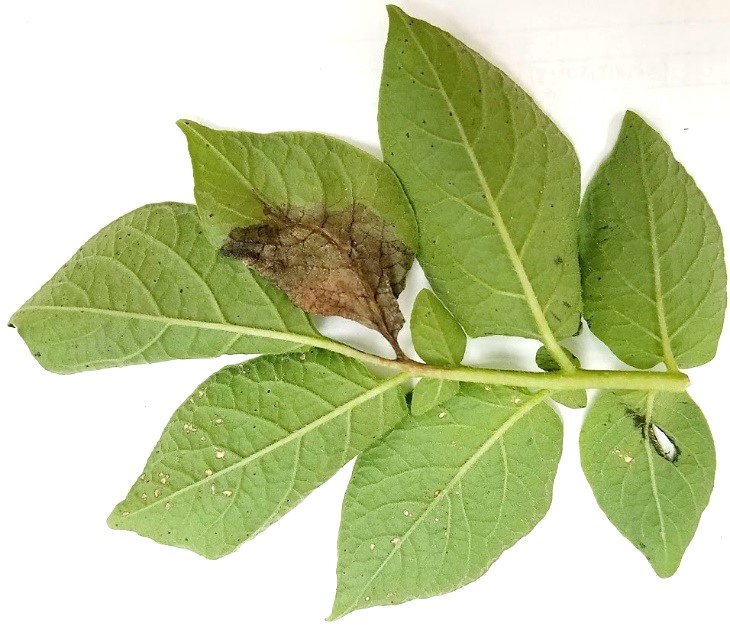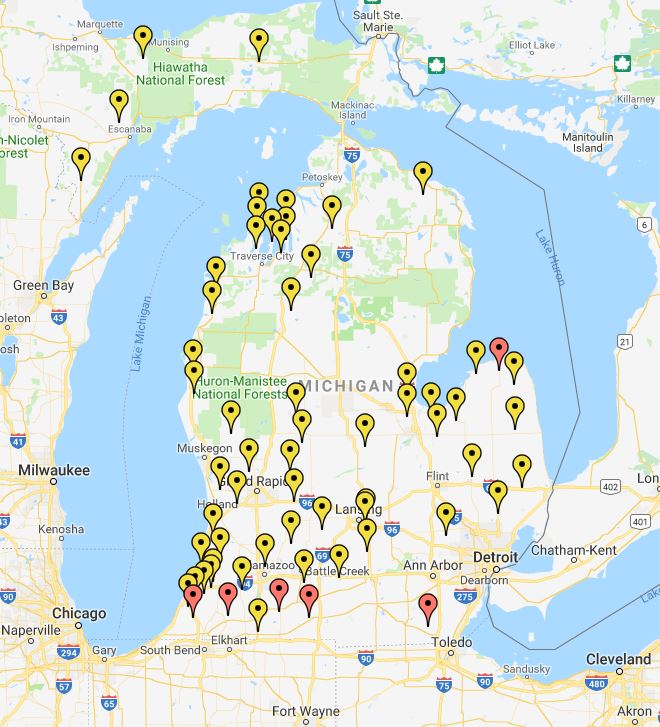Aug 17, 2018Late blight confirmed in Michigan’s Monroe County
Potato late blight has been reported in Michigan’s Monroe County. Late blight was confirmed by Michigan State University Diagnostic Services, and the causal organism identified as Phytophthora infestans. The genotype is believed to be US-23. Initial testing is being conducted by a third party laboratory and will be confirmed by researchers at the University of Wisconsin – Madison; this genotype is generally still sensitive to mefenoxam/metalaxyl. Risk-based fungicide recommendations are available for Michigan through the MSU Potato Disease website.
 Photo 1. Potato late blight, water-soaked lesion on top surface of leaf. Photo by Jaime Willbur, MSU.
Photo 1. Potato late blight, water-soaked lesion on top surface of leaf. Photo by Jaime Willbur, MSU.
Rob Schafer, Mid-Michigan Agronomy, reported that affected potatoes were located at the edge of the field with lesions occurring in the upper parts of the canopy. Lesions were brown and water-soaked (Photo 1) with sporulation, noticeable as gray, fuzzy growth on leaf undersides (Photo 2).

This report corresponds with the predicted high late blight risk in southern areas of the state (Photo 3). We strongly recommend intensive monitoring of potato crops for late blight detection. Samples should be submitted to MSU Diagnostic Services and reported to MSU Potato Disease or your local MSU Extension expert (find an expert or call 888-678-3464).

Additional model information
Late blight is caused by P. infestans, which favors 60-80 degree Fahrenheit temperatures, high humidity and frequent rainfall. Our online forecasting tool calculates disease severity values (DSVs) based on the duration of temperature and relative humidity conditions that are favorable for disease development. Accumulated DSVs (based on early May emergence) are used to determine the local late blight risk level, indicated by the color of the map marker pins:
The Michigan Late Blight Forecast Tool is currently calculating 2018 risk predictions. This tool was developed by Baker et al. 2002 and weather data used in this model is provided by Michigan State University Enviroweather. A customizable tool for early to late emergence scenarios is currently in development. Answers to frequently asked questions about this forecast tool are available.







